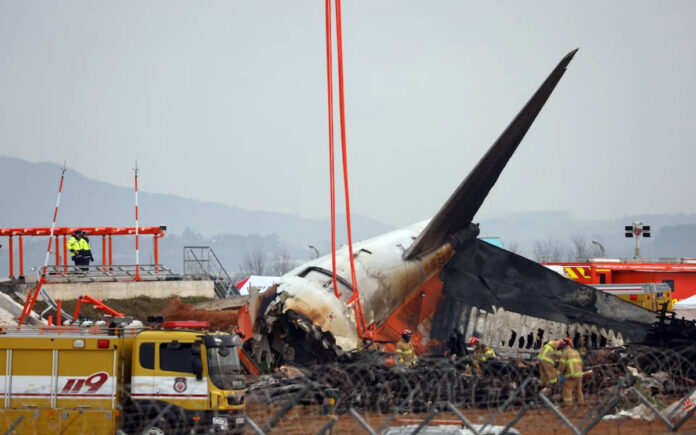Seoul: South Korea’s acting President, Choi Sang-mok, has ordered an emergency safety inspection of the country’s entire airline operation system following the nation’s deadliest air disaster. Investigators are working to identify victims and determine the cause of the crash that killed 179 people on December 29.
The tragedy occurred when a Jeju Air Boeing 737-800, flight 7C2216, attempted to land at Muan International Airport in the southern part of the country. The plane, arriving from Bangkok with 175 passengers and six crew members, belly-landed and skidded off the runway, erupting in a fireball after crashing into a wall. While four of the six crew members perished, two survivors were rescued from the wreckage.
Choi, speaking at a disaster management meeting in Seoul, stressed that the top priority is to identify the victims, support their families, and provide treatment to the survivors. “Even before the final results are out, we ask that officials transparently disclose the accident investigation process and promptly inform the bereaved families,” he said. He also called for a swift and thorough emergency safety inspection of the entire aircraft operation system to prevent similar accidents in the future.
The South Korean transport ministry announced that it is considering a special inspection of all 101 Boeing 737-800 aircraft operated by South Korean airlines, as part of its broader safety review.
The plane’s tragic crash occurred shortly after 9 a.m. on Sunday when the crew reported a bird strike, with air traffic control having previously warned of birds in the vicinity. The pilots declared a mayday, intending to go around, but the aircraft made a belly landing and crashed into a structure at the end of the runway. Investigators are exploring several factors, including the possible role of the localiser antenna and the embankment on which it was located, as well as weather conditions and the fast speed at which the plane was traveling.
At the scene, emergency workers were working through the wreckage, which had been almost completely destroyed in the explosion following the crash. The plane’s flight data recorder was recovered but appeared to be damaged. It remains unclear whether the data is intact enough for analysis.
The victims of the crash included many local residents returning from holidays in Thailand, along with two Thai nationals. Families of the victims gathered at Muan airport, awaiting news of their loved ones. Park Han-shin, who lost his brother in the crash, described the grief and frustration of waiting for the final identification of victims, citing the long process following the 2014 ferry sinking disaster that killed over 300 people.
Shares of Jeju Air saw a dramatic 15.7% drop, hitting a record low after the incident.
Also Read | Jeju Air Faces Sharp Stock Decline Amid Deadly Crash Investigation
Under global aviation rules, South Korea will lead the civil investigation into the crash, with the National Transportation Safety Board (NTSB) from the U.S. involved due to the aircraft’s design and construction. Boeing and the Federal Aviation Administration (FAA) are also participating in the investigation.
Also Read | Ukraine Deals Major Blow to Russia’s Infrastructure with Sabotage Operations
This crash comes at a time of political instability, as Choi, overseeing the recovery and investigation efforts, assumed his role as acting leader just three days after the impeachment of the South Korean president and prime minister over a brief declaration of martial law.



